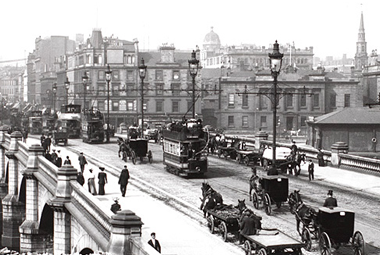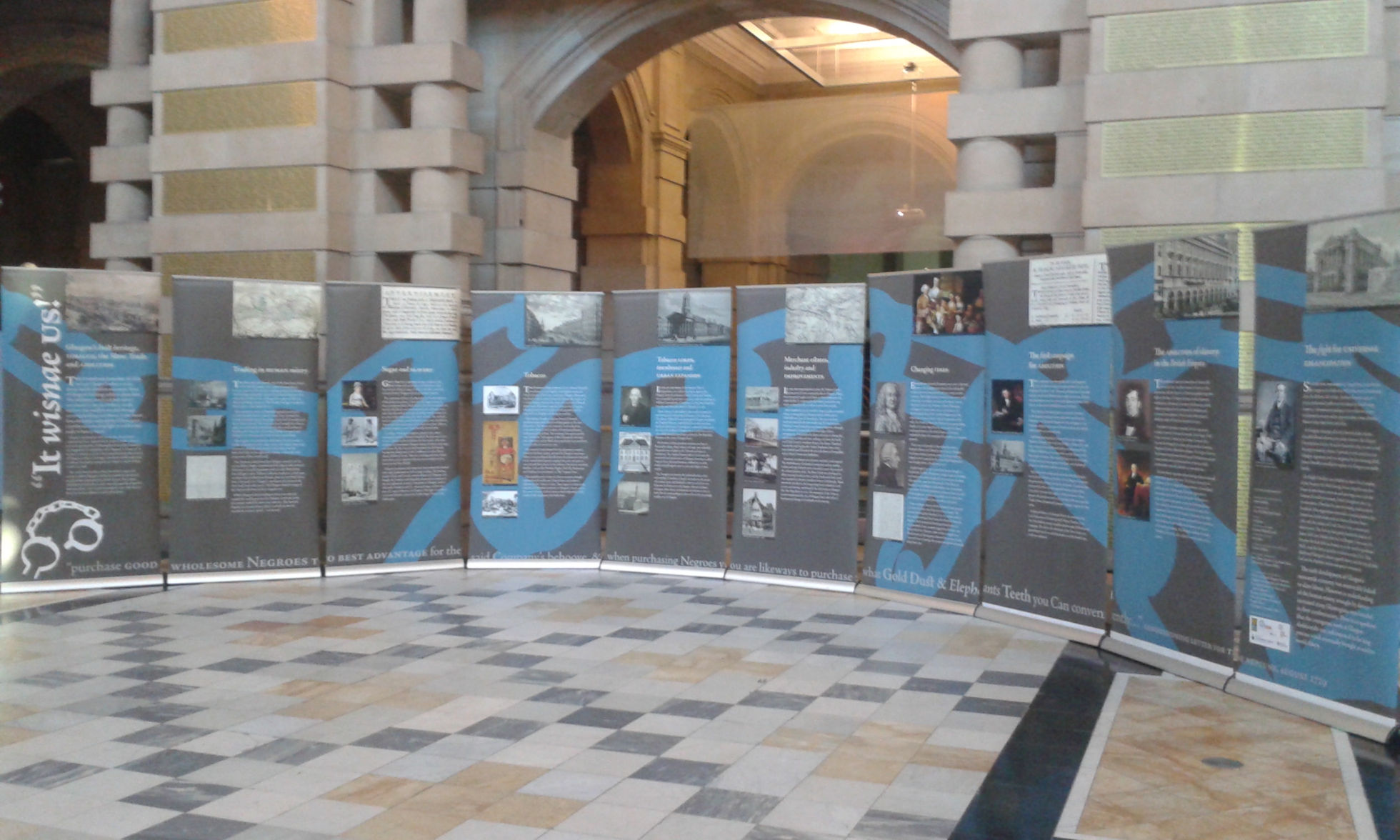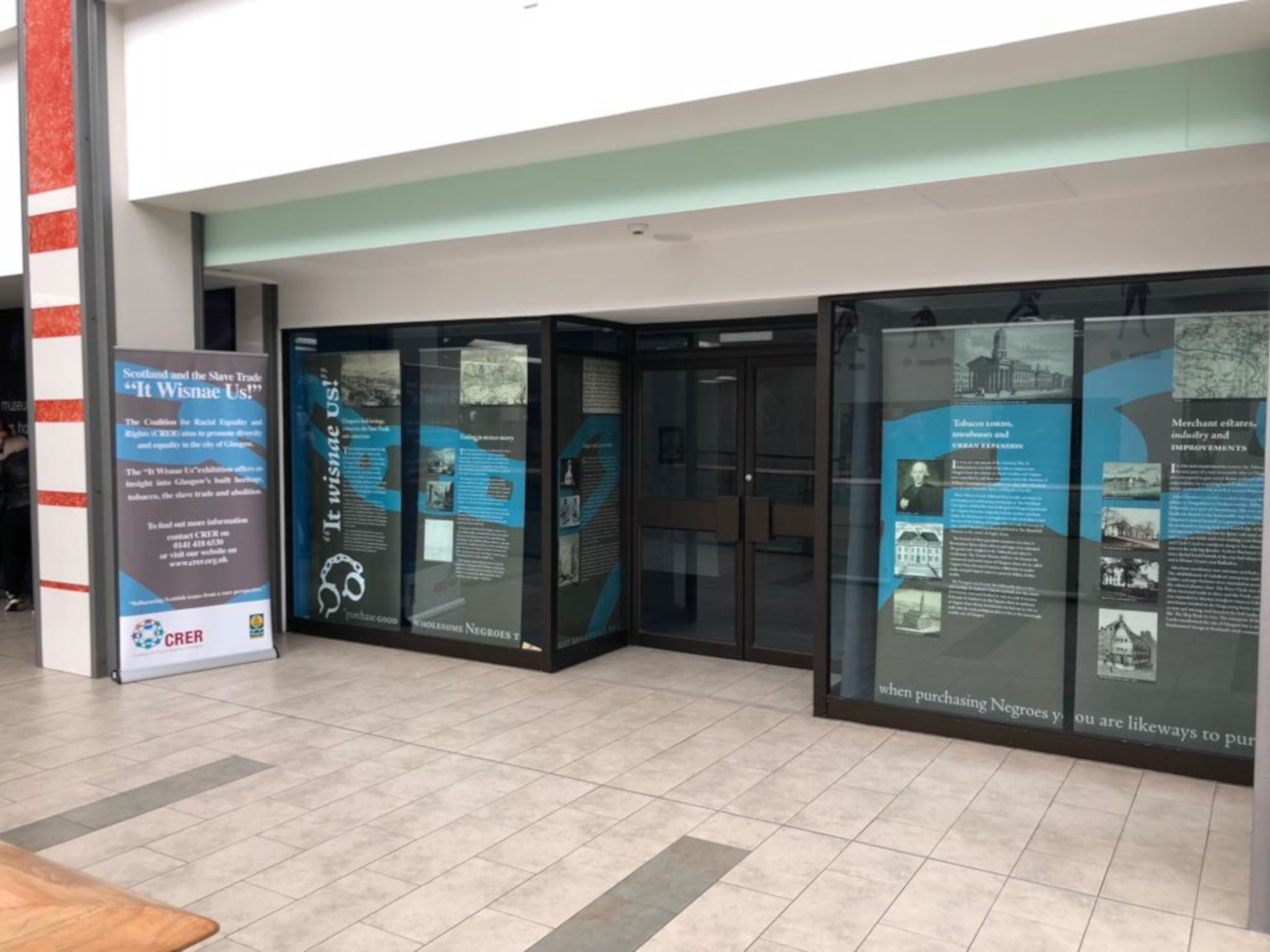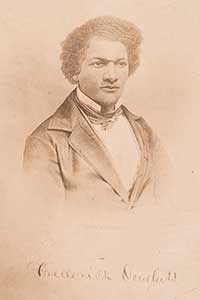“It Wisnae Us” - the walking tour
Union with England in 1707 removed the legal barriers that prevented Scotland from participating in trade with the New World. This allowed Scottish merchants access to new markets. By the mid eighteenth century, Glasgow and Greenock, the city’s satellite ports. Many Scottish merchants also funded slave ships from other ports such as London, Bristol, Whitehaven and Liverpool, in what became known as the ‘triangular trade.’
British ships traded manufactured goods for enslaved people in Africa, and then on to slave plantations in America and the West Indies.
The direct trade with these colonies, the largest of which were in Virginia and Jamaica, led to major economic growth for Glasgow. Much praise has been heaped upon the merchant’s business acumen while the brutal reality, that sugar and tobacco were produced almost exclusively on slave labour, has been almost casually dismissed with a trite, “it wisnae us”.
Only recently, has the brutal truth of this episode in Glasgow’s economic past been examined and properly acknowledged.
The golden age of tobacco created the Tobacco Lords, who accumulated great wealth and became the Glasgow elite. They constructed townhouses, built churches, endowed public buildings and developed estates around the city that, even today, testify to their wealth.
Some of these buildings are described in this guide. They illustrate the opulence in which the Tobacco Lords lived from day today, where they socialised and where they prayed. Exploring this history gives us extraordinary insight into the role of slavery in Glasgow’s mercantile past.
Strike for Freedom
Frederick Augustus Washington Bailey was born into chattel slavery in Maryland, USA. In 1838, aged barely 20, he made a risky escape. He adopted the surname 'Douglass' and, devoted his life to the fight for social justice. Committed to 'telling the story of the slave' and the 'strike for freedom', he was one of many early Black anti-slavery campaigners to live and work in Scotland.
During October 2018 – February 2019 The National Library of Scotland displayed Never-before manuscripts and photographs that reveal untold tales of hope, despair, love, war and friendship in the lives of the Douglass family. Pamphlets, books and reports chart Frederick Douglass's influence and the remarkable stories of 19th-century Black abolitionists as they campaigned for social justice in the midst of the American Civil War. Many of the letters, manuscripts and photographs displayed are on kind loan from the Walter O and Linda Evans collection in the USA.
You can find out more about Frederick Douglass and this collection https://www.nls.uk/exhibitions/treasures/frederick-douglass
You can explore maps pinpointing Frederick Douglass and other Black abolitionists in Edinburgh and Scotland using NLS interactive map resource. https://www.nls.uk/exhibitions/treasures/frederick-douglass/maps
You can also view a 'Strike for Freedom' display guide and a 'Black Freedom Trail Map' of Edinburgh at Edinburgh University's 'Our Bondage & Our Freedom' website https://ourbondageourfreedom.llc.ed.ac.uk/



